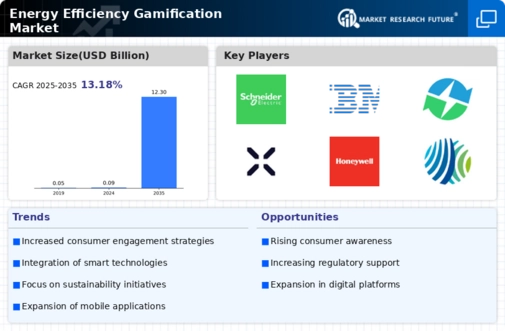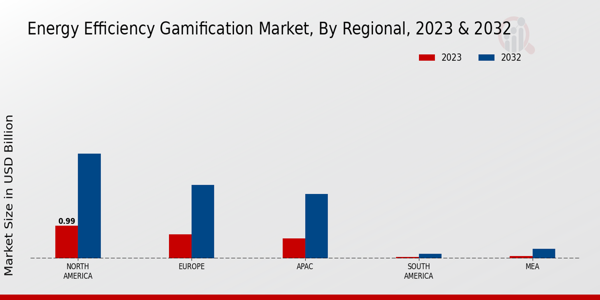Energy Efficiency Gamification Market Summary
The Global Energy Efficiency Gamification Market is projected to grow from 3.15 USD Billion in 2024 to 12.28 USD Billion by 2035.
Key Market Trends & Highlights
Energy Efficiency Gamification Key Trends and Highlights
- The market is expected to experience a compound annual growth rate (CAGR) of 56.35% from 2025 to 2035.
- By 2035, the market valuation is anticipated to reach 12.3 USD Billion, indicating substantial growth potential.
- in 2024, the market is valued at 3.15 USD Billion, reflecting the nascent stage of energy efficiency gamification.
- Growing adoption of energy efficiency technologies due to increasing environmental awareness is a major market driver.
Market Size & Forecast
| 2024 Market Size | 3.15 (USD Billion) |
| 2035 Market Size | 12.28 (USD Billion) |
| CAGR (2025-2035) | 13.18% |
Major Players
Schneider Electric, IBM, EcoStruxure, Retrolux, Verdantix, Honeywell, Johnson Controls, Philips, Cisco, Powerhouse Dynamics, EnergyHub, Enel X, Ceres, Siemens, Eneco

























